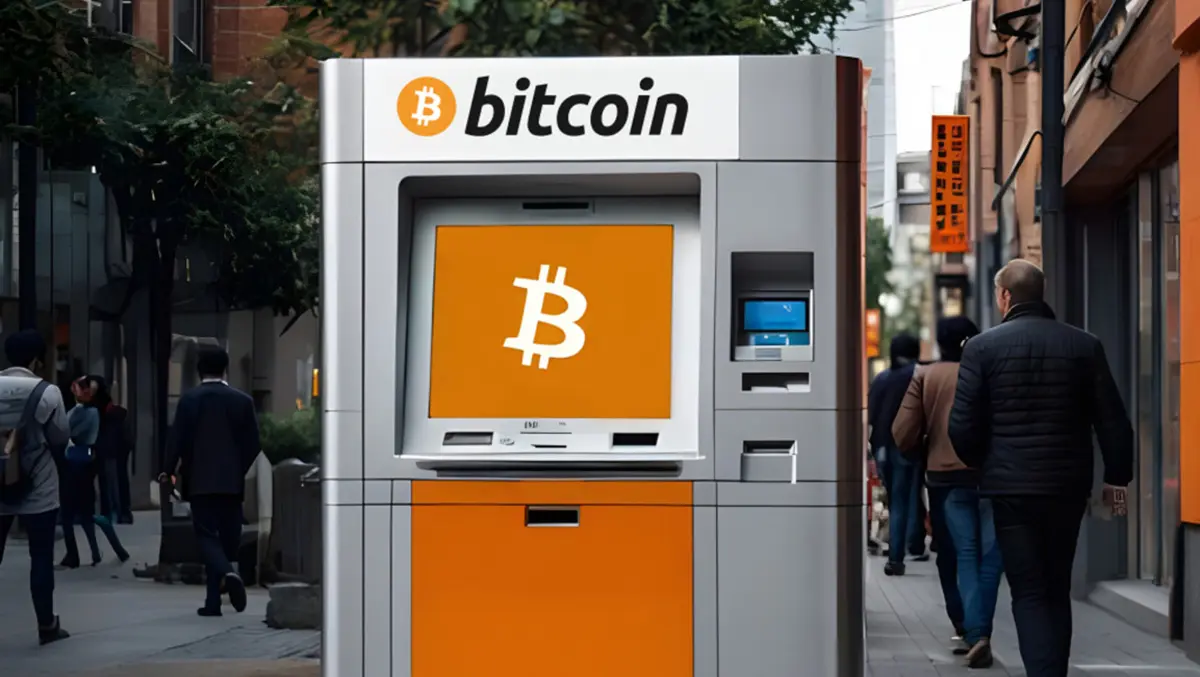
The lowdown on crypto ATMs and their place in the ecosystem
As of mid-2024, there are nearly 40,000 crypto ATMs scattered across the globe, with the United States commanding an impressive 82% of market share. The surge in physical touchpoints for digital currency is more than just a trend; it's part of a rapidly expanding ecosystem projected to grow at a compound annual growth rate of 63.4% from 2024 to 2030. New Zealand, too, is getting in on the action, with a proliferation of ATMs installed across the country — still a modest number, but enough to spark curiosity in media.
What are they?
These ATMs provide a physical interface for those who want to engage with crypto without using an online exchange.
They're predominantly used for:
Purchasing crypto: Users can insert cash or use a debit/credit card to purchase crypto, such as Bitcoin, Ethereum or other supported digital currencies. The purchased crypto is then transferred to the user's digital wallet.
Selling crypto for cash: Some crypto ATMs allow users to sell their crypto and receive cash in return. The process involves sending the crypto from the user's digital wallet to the ATM, which then dispenses the equivalent amount in cash (minus any fees).
Why are they needed?
These ATMs are often used by individuals who prefer to handle their transactions' in person'. They are a way of getting 'instant service' when out and about without the need to log in to an exchange. They also provide quick access to cash without (first) having to convert crypto to fiat. This is especially useful given the number of merchants accepting crypto and crypto spend services is still growing.
The cost of 'convenience'
It is worth noting, however, that there is a 'cost' to this convenience…
The fees associated with these ATMs (on top of network fees) can be exorbitant - often reaching up to 20% per transaction. (This is like buying a $100 t-shirt and handing over an extra $20 just for the privilege of making a cash purchase.)
Give it a think: Before you opt for the convenience of a crypto ATM, consider whether the fees are worth the price of skipping a few clicks on your phone. If you do need to 'convert crypto to cash', it's worth noting that with some forward-planning, you could 'sell' yourself some crypto through an exchange who would deposit the cash into your bank account. You can then withdraw cash from your fiat bank account - for a fee, but likely one that's less than 20% of the transaction. (Hopefully, as the number of merchants accepting crypto and crypto spend services grows, this use case will become redundant.) Similarly, reputable exchanges can be accessed 24/7 from the convenience of any smartphone to make crypto purchases.
Beware of bad actors
When it comes to safeguarding your crypto, security is paramount. Reputable exchanges have spent years building trust by adhering to strict Know Your Customer (KYC) guidelines to ensure that your transactions are safe. Non-custodial exchanges, in particular, offer customers the freedom to buy and sell crypto without the risk of funds being held hostage.
While crypto ATMs are also required to follow KYC guidelines, the nature of these machines can make it harder to ascertain their legitimacy.
Before using a crypto ATM, it's essential to do your own research, including:
Check the operator: Look for the operator's name on the ATM and research it online to ensure it's reputable and registered with local financial authorities.
Confirm KYC/AML compliance: Legitimate ATMs should require identification (KYC) and follow Anti-Money Laundering (AML) procedures, such as realistic transaction limits.
Use ATM locators and reviews: Websites like CoinATMRadar or mobile apps can help verify ATMs. Additionally, check online reviews and crypto forums for feedback from others who have used them. .
Contact the operator: If unsure, reach out to the operator directly for confirmation as legitimate operators should provide clear customer support.
Give it a think: Real growth in the crypto ATM market will come with increased trust and measured regulation to protect the consumers who use them. As highlighted in our recent consumer research on New Zealand's crypto market, trust is a critical factor in onboarding the next wave of crypto investors.
What you could be missing out on when you opt for 'in person' and not 'online'
Although they don't offer an 'in-person' presence; most crypto exchanges do offer a few key features that may make transacting online worth the screen time:
Fraud protection - If it turns out you're sending funds to a scammer, platforms like Easy Crypto will stop the transaction and notify you, giving you the opportunity to recover your funds. They do this both through close monitoring and automated blockchain analytics.
Transaction history - Having a record of all your trades in one place is super helpful come tax time! (Don't assume that using cash means your transactions are not visible to the IRD!)
Local support - A team based in your own country who can help you with any questions is an important support mechanism, especially for those just starting out in their crypto journey.
Diverse products - Exchanges will often offer a wide range of coins, swaps and multiple payment options that make using them ultra-convenient and versatile.
Give it a think: As with all things, it's important to remember the phrase 'horses for courses' and to make an informed judgement around whether your unique needs are best met by an ATM or exchange.
In niche circumstances - such as for those who aren't digitally savvy with online platforms or need immediate access to cash - crypto ATMs are a useful addition to the ecosystem - as long as we question how often we use them (give the cost) and focus on safety.

